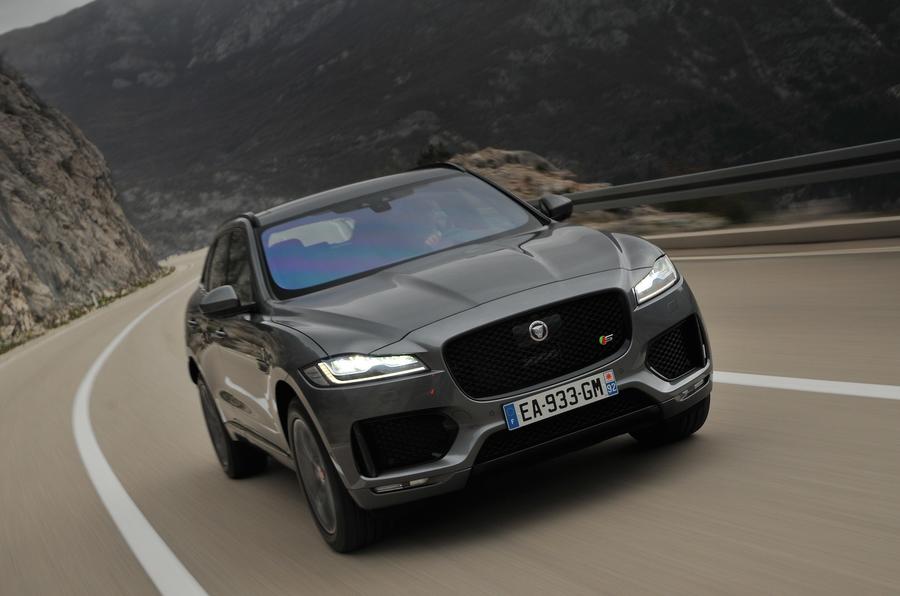What is it?
At last, it’s the Jaguar F-Pace, the curiously named and curiously late entrant into the BMW X3/Audi Q5 class. By the time most manufacturers are releasing their sixth or seventh SUV/crossover/off-roader/4x4/callitwhatyouwill in their range, this is Jaguar’s first. Maybe it hasn’t wanted to step on Land or Range Rover’s toes.
The F-Pace’s supposed dynamism is intended to quell any of those fears. Jaguar’s dynamics team have had one particular rival in mind: the F-Pace is meant to be better to drive than a Porsche Macan. If it is, the Discovery Sport will be free to go about its business.
To that end, then, unlike the Q5 and Macan, which share a fair degree of underpinning, the F-Pace bears about as much mechanical resemblance to a Discovery Sport as a penguin does to a kestrel.
The F-Pace’s chassis is 80% aluminium, its architecture shared with the XE and XF; Jaguar is careful to use the word architecture rather than platform, because platform sounds like you’ve dropped a different body onto the same floor, it sounds a bit Volkswageney. But the effect is broadly similar: the F-Pace has double-wishbone front and integral-link rear suspension, just like the XE and XF, there’s great commonality ahead of the front-seat occupants (because that’s where all the crash and powertrain structure is, and that’s the most expensive bit to develop); but in fairness the wheelbase and tracks are unique to this car – as is the height, obviously – and the body structure has received more bespoke work than some rival makers would allow it.
The 20% that isn’t aluminium, for example, is in places magnesium – lighter even than aluminium for a given strength – so it’s helpful to use it in high places, or at the front of the car, to get the centre of gravity low and even weight distribution Jaguar’s dynamics team so badly wanted. The tailgate is plastic, for CofG reasons, though the spare wheel well is steel – which, heavier than aluminium, pulls the weight distribution back to nigh on 50:50. (It also means, come a mid-life facelift, there’s some easy weight loss at the rear to counter, say, a lighter, even more downsized engine at the front.)
There’s nothing downsized about the car itself, mind. Jaguar’s body engineers are most proud of the fact that the F-Pace has a 650-litre boot, and easily seats three adults in the back (which it does). By being bigger? Or by being cleverer? A bit of both, they say. This is a 4731m long car, 1936mm wide without mirrors (2175mm with ‘em), and with a 2874mm wheelbase. Overall that’s 50mm longer than a Macan and 74mm than an X3, but apparently it’s the packaging beneath the boot floor that really makes the difference; what makes it a full-size, mid-size crossover.
Engines are of conventional capacities and power outputs. You can have an Ingenium 2.0-litre diesel making 178bhp, a 3.0-litre V6 diesel making a sprightly 296bhp or, as tested here – hey, it’s a dynamic car, so why not try the fastest? – a 3.0-litre, 375bhp, supercharged V6 petrol that does rather good work elsewhere in the Jaguar range, most audibly in the F-type sports car.
All of the above drive all four wheels through that most fantastic of gearboxes, the eight-speed ZF auto (though a six-speed manual, and two wheel drive, are options on the 2.0d only).















































Join the debate
Add your comment
Super SUV
JLR
TATA